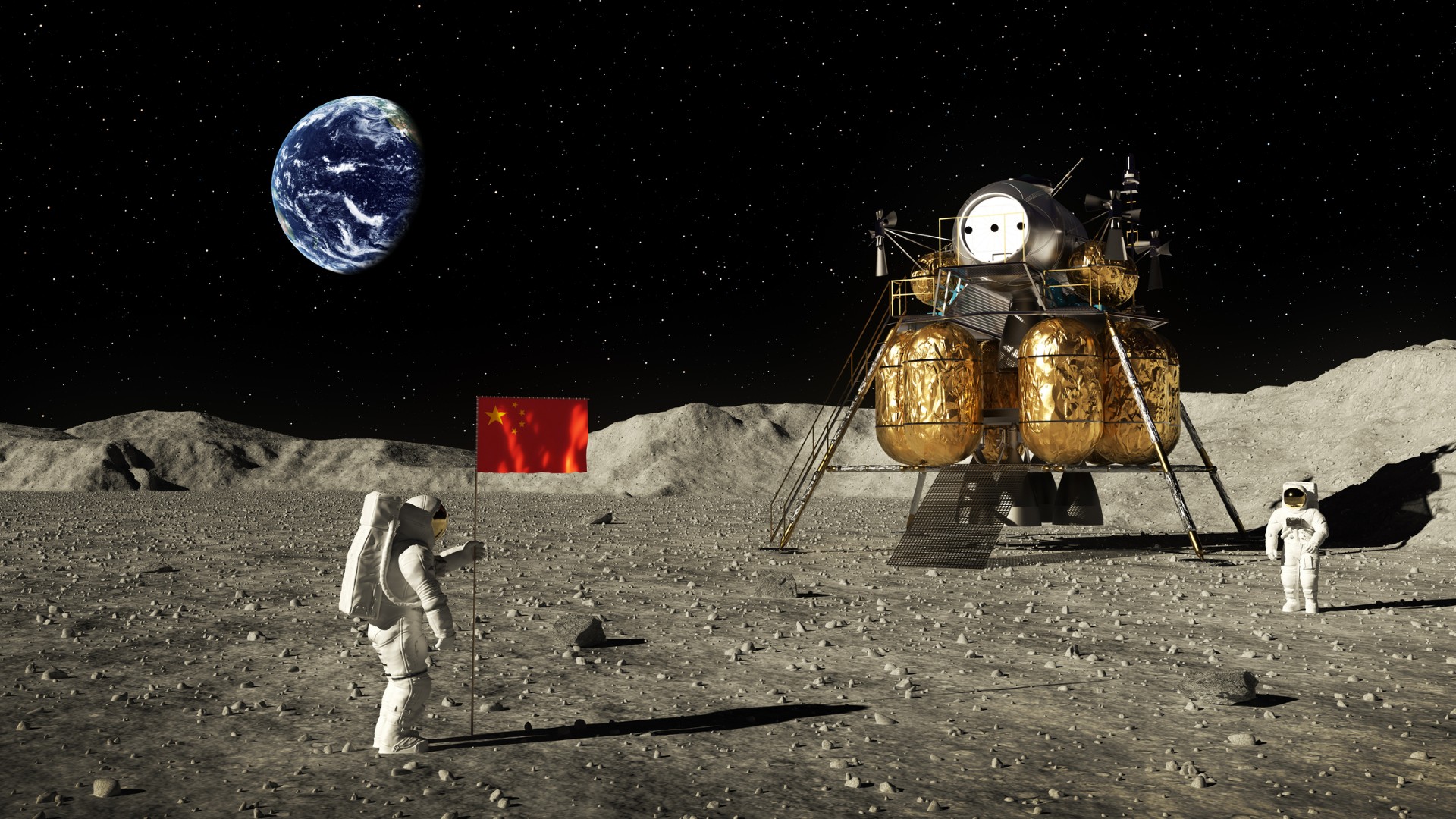China has revealed a few details about its ambitious plan to put boots on the moon.
In late May, Chinese space officials announced their intention to land astronauts on the moon by 2030. And on Wednesday (July 12), we got a bit of information about how they plan to do it, courtesy of a China Manned Space Agency engineer.
The mission concept involves two rocket launches, according to Reuters, which cited Chinese state media coverage of the engineer's presentation at a space conference in the city of Wuhan. One of those launches will loft a lunar lander, and the other will send astronauts skyward.
"The twin-rocket plan would overcome China's longstanding technological hurdle of developing a heavy-duty rocket powerful enough to send both astronauts and a lander probe," Reuters wrote on Wednesday.
Related: China builds simulated moon chamber to prep for crewed lunar landings (video)

The lander and the crewed spacecraft will rendezvous in lunar orbit. The astronauts will move over to the lander and then head down to the lunar surface, where they'll do a variety of scientific work and collect some moon samples.
The lander will then carry the explorers back up to lunar orbit, where they'll get back onboard their original spacecraft for the trip back to Earth, Reuters reported. It's unclear how many astronauts will fly on the mission.
Get the Space.com Newsletter
Breaking space news, the latest updates on rocket launches, skywatching events and more!
The lunar landing will not be a one-off, if all goes according to plan for China: The country aims to build a crewed research outpost on the moon in the 2030s, a massive project that features Russia as a partner.
NASA has plans of its own to set up a moon base; indeed, that's one of the chief goals of the agency's Artemis program.
That program's first mission, Artemis 1, sent an uncrewed Orion capsule to lunar orbit and back late last year. The next one, Artemis 2, is scheduled to launch four astronauts around the moon in late 2024.
Artemis 3 will land astronauts near the moon's south pole aboard SpaceX's Starship vehicle, which NASA selected as the program's first lunar lander. That touchdown is targeted for late 2025 or 2026.
NASA and China don't work together on big space projects. Since 2011, U.S. law has prohibited the U.S. space agency, as well as the White House Office of Science and Technology Policy, from cooperating with their Chinese counterparts on space activities, unless Congress has approved such partnerships in advance.
Join our Space Forums to keep talking space on the latest missions, night sky and more! And if you have a news tip, correction or comment, let us know at: community@space.com.

Michael Wall is a Senior Space Writer with Space.com and joined the team in 2010. He primarily covers exoplanets, spaceflight and military space, but has been known to dabble in the space art beat. His book about the search for alien life, "Out There," was published on Nov. 13, 2018. Before becoming a science writer, Michael worked as a herpetologist and wildlife biologist. He has a Ph.D. in evolutionary biology from the University of Sydney, Australia, a bachelor's degree from the University of Arizona, and a graduate certificate in science writing from the University of California, Santa Cruz. To find out what his latest project is, you can follow Michael on Twitter.
-
Classical Motion Practical common sense strategy. The only leery part is moon orbital docking. Apollo in 1969 only had a four, maybe eight bit computer, and made it look easy. Although I suspect the actual docking was done by hand and eyeball piloting. Pilot training needed for navigational failures. With the computers and instruments we have now, it shouldn't be a problem. But one never knows, some of the most precise instruments and redundant planning, we still have mission failures.Reply
Docking in an foreign orbit might be very common one day. Automatic bumper to bumper parking.









